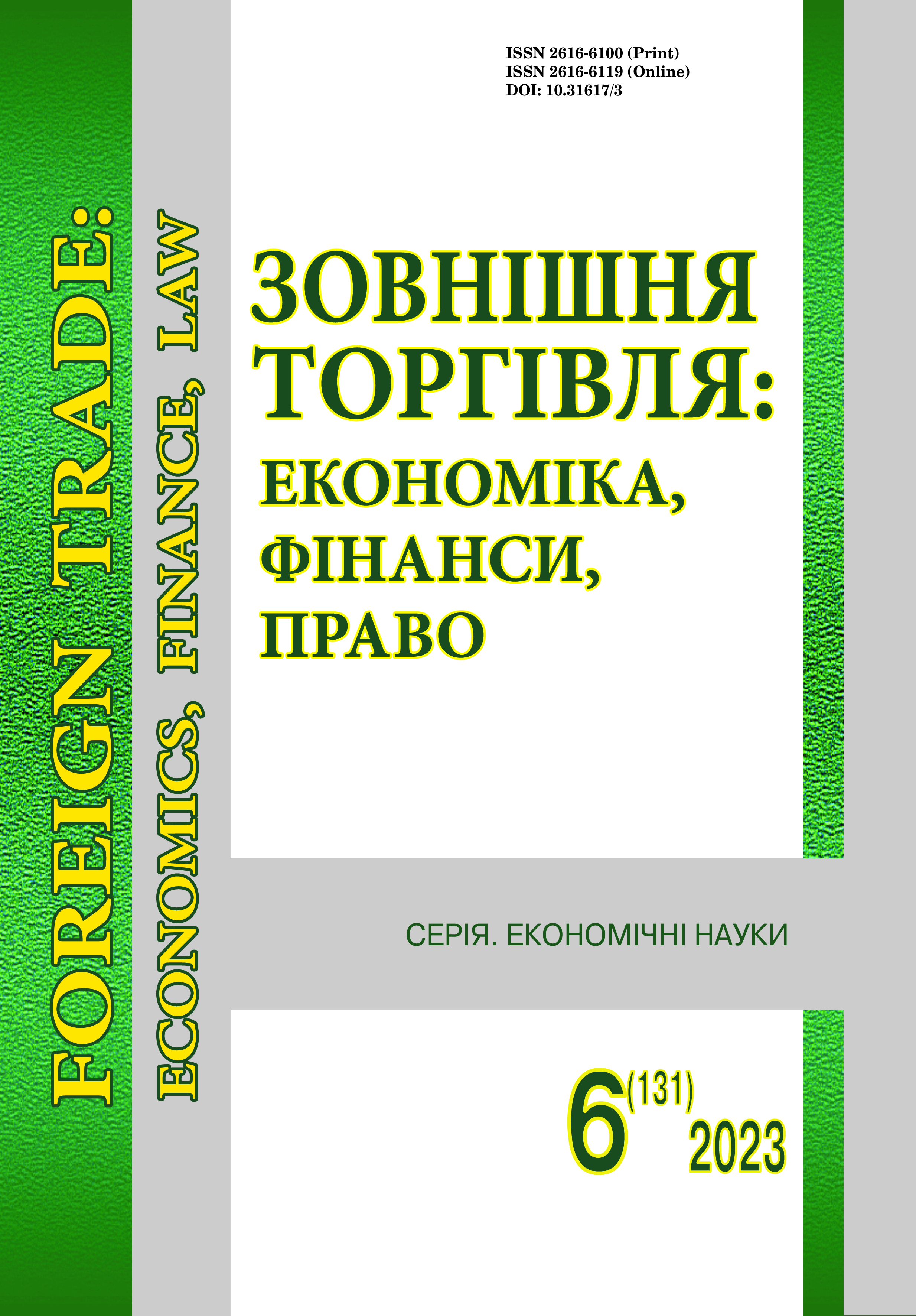Evolution of enterprise management within the life cycle: the case of "mighty elephants"
DOI:
https://doi.org/10.31617/3.2023(131)05Keywords:
organizational behavior, change management, corporate sustainability, project decisions, strategy.Abstract
This article continues a series of empirical studies aimed at identifying changes in organizations that occur based on the strength of the relationship between competitive strategies and the stages of organizational development. The study aims to clarify the existence of relationships between strategies and stages of organizational development, in order to ensure flexibility and timely adaptation to changes in the environment, faster response to changes, maintaining strategic consistency, sustainability, and managing organizational crises. Understanding the relationship between strategies and the stages of organizational development helps to manageably adapt strategies to the current state of the organization and improve the effectiveness of project-oriented management. The purpose of the article is to identify of the strength of the relationship between the violent competitive strategy "powerful elephants" and the phases of the organizational life cycle, to verify the presence of three types of relationships: related, opposite, and with a directly independent mutual influence, to determine the impact of the results obtained on the change in organizational behavior. To solve the tasks set, the following methods were used in the work: morphological analysis, analysis and synthesis, systematization, analysis of literary sources, methods for assessing the consistency of expert opinions, the model of competitive strategies by H. Friesewinkel, the model of the organizational life cycle of the organization by I. Adizes. Based on the comparison of morphological statements, evidence of the significance and presence of the strength of different types of relationships was obtained. The results obtained indicate the highest efficiency and timeliness of the implementation of the violent strategy of powerful elephants in the phases of "Adolescence", "Prime", "Stability", but the preparation and building of the organizational framework for the implementation of this strategy must begin from the previous phase of "Go-go", where the resistance to the implementation of this strategy is low and the signs of a new structure are already beginning to appear and manifest themselves. The development of a strategy based on the strength of the relationship will ensure adaptation in the management of organizational changes, and project decisions aimed at implementing the violent competitive strategy of powerful elephants will be effective and timely. Knowledge of the patterns of organizational behavior based on the strength of the relationship between competitive strategies and the stages of organizational development can help senior managers understand the relationship between project activity and corporate sustainability.
References
Abdollahi, A., Sarhadi, A., & Poordadashi, A. (2015). Corporate life cycle: New approach for sustainable development strategy JIEB-3-2015, (рр. 61-65). https://www.psp-ltd.com/JIEB_23_3_2015.pdf
Adizes, I. (1979). Organizational passages - Diagnosing and treating lifecycle problems of organizations. Organizational Dynamics. Vol. 8(1), (рр. 3-25). https://doi.org/10.1016/0090-2616(79)90001-9
Adizes, I. K. (2004). Managing Corporate Lifecycles. 1st edn. The Adizes Institute, California, 486. https://archive.org/details/managingcorporat0000adiz/page/n5/mode/2up
Bushuyev, S., Ivko, A., Mudra, M., Murovanskiy, G., & Piliuhina, K. (2023). Adaptability in managing innovative projects within the bani environment. Management of Development of Complex Systems. Vol. 54, (рр. 5-11). https://doi.org/10.32347/2412-9933.2023.54.5-11
Chaddock, R. E. (1925). Principles and Methods of Statistics (1st Edition). Houghton Miffin Company, The Riverside Press, Cambridge. https://archive.org/details/principlesmethod0000chad/page/6/mode/2up?view=theater
Chandler, A. D., Amatori F., & Hikino, T. (et al.) (1997). Big Business and the Wealth of Nations. Cambridge, MA: Harvard University Press, (pp. 395-432). https://doi.org/10.1017/CBO9780511665349
Friesewinkel, H. & Schneider E. (1988). Das Pharma-Marketing-Buch. Kulmbach: Pharma-Team, 543 p.
Friesewinkel, H. (1989). Feldforschung im Dienste der Produktpositionierung. In: Dichtl, E., Raffée, H., Thiess, M. (eds). Innovatives Pharma-Marketing. Gabler Verlag, (pp. 247-283). https://doi.org/10.1007/978-3-322-89322-2_12
Friesewinkel, H., & Schneider, E. (1982). Das pharmazeutische Marketing II. Kulmbach: Pharma-Team-Verlag, 535 р.
Grime, J. P. (1979). Plant strategies and vegetation processes. Chichester: John Wiley & Sons, Ltd., Chichester-New York-Brisbane-Toronto, 222.
Grime, J. P. & Pierce, S. (2012). The Evolutionary Strategies that Shape Ecosystems. Wiley-Blackwell. 240. https://doi.org/10.1002/9781118223246
Saeed, B. & Wang, W. (2014). Sustainability Embedded Organizational Diagnostic Model. Modern Economy. Vol. 5, (рр. 424-431). https://doi.org/10.4236/me.2014.54041
Shenhar, J. A., Dvir, D., Levy, O., & Maltz, C. A. (2001). Project Success: A Multidimensional Strategic Concept. Long Range Planning, Vol. 34(6), (рр. 699-725). https://doi.org/10.1016/S0024-6301(01)00097-8
Hordieieva, I. O. (2021b). Study of the closeness between explerent strategy and phases of the organization life cycle. Ekonomika ta derzhava, 8, 129-136. https://doi.org/10.32702/2306-6806.2021.8.129
Hordieieva, І. О. (2021d). Organization adaptability management assessment by the analysis method of hierarchies according to the criteria of efficiency and timeliness of decision making. Efektyvna ekonomika, 7. https://doi.org/10.32702/2307-2105-2021.7.88
Hordieieva, I. O. (2021с). Closeness between patient competitive strategy and phases of the organization life cycle. Investytsiyi: praktyka ta dosvid, 16, 58-63. https://doi.org/10.32702/2306-6814.2021.16.58
Hordieieva, І. O., & Sharovara, O. M. (2021). Closeness between commutative competitive strategy and phases of the organization life cycle. Efektyvna ekonomika, 8. https://doi.org/10.32702/2307-2105-2021.8.97
Hordieieva, I. O. (2021a). Analysis of the relationship and interaction between strategy and organization life cycle in the context of project activity. International Scientific Journal "Internauka". Series: "Economic Sciences", 7. https://doi.org/10.25313/2520-2294-2021-7-7448
Grabovetskyi, B. E. (2010). Methods of expert evaluations: theory, methodology, directions of use. Vinnytsia, VNTU. https://press.vntu.edu.ua/index.php/vntu/catalog/download/324/612/651-1?inline=1
Kraus, N., Ramskyi, А. & Kraus, K. (2020). Project activity of ecosystem institutes of innovation and business university: problems, risks, opportunities. Efektyvna ekonomika, 5, https://doi.org/10.32702/2307-2105-2020.5.5
Roj, O. M. (2018). Research of socio-economic and political processes, Yurajt. 314 p.
Savenko, V., Shatrova, I., Demydova, O., Honcharenko, T. & Liashchenko, T. (2023). Evolution of organizational development and personnel management. Management of Development of Complex Systems, 53, 91-99. https://doi.org/10.32347/2412-9933.2023.53.91-99
Sokolova, L. V. (2004). Theory and practice of adaptation of enterprises to the changing business environment. Kharkiv, KhNURE. 288 p.
Sharovara, O., Kalinko, I. & Hordieieva, І. (2021). Closeness between violent competitivestrategy "proud lions" and phases of the organization life cycle. Ekonomika ta derzhava, 9, 94-99. https://doi.org/10.32702/2306-6806.2021.9.94
Additional Files
Published
How to Cite
Issue
Section
License

This work is licensed under a Creative Commons Attribution 4.0 International License.
This work is licensed under a Creative Commons Attribution 4.0 International (CC BY 4.0)







